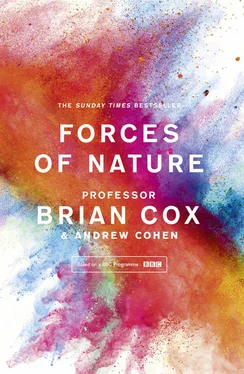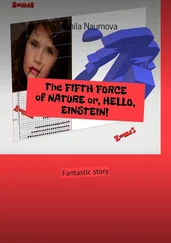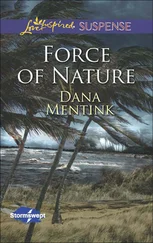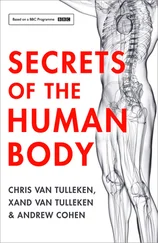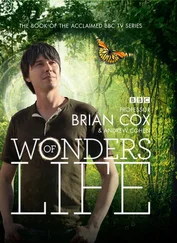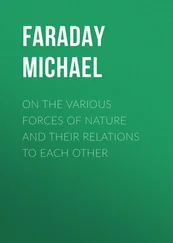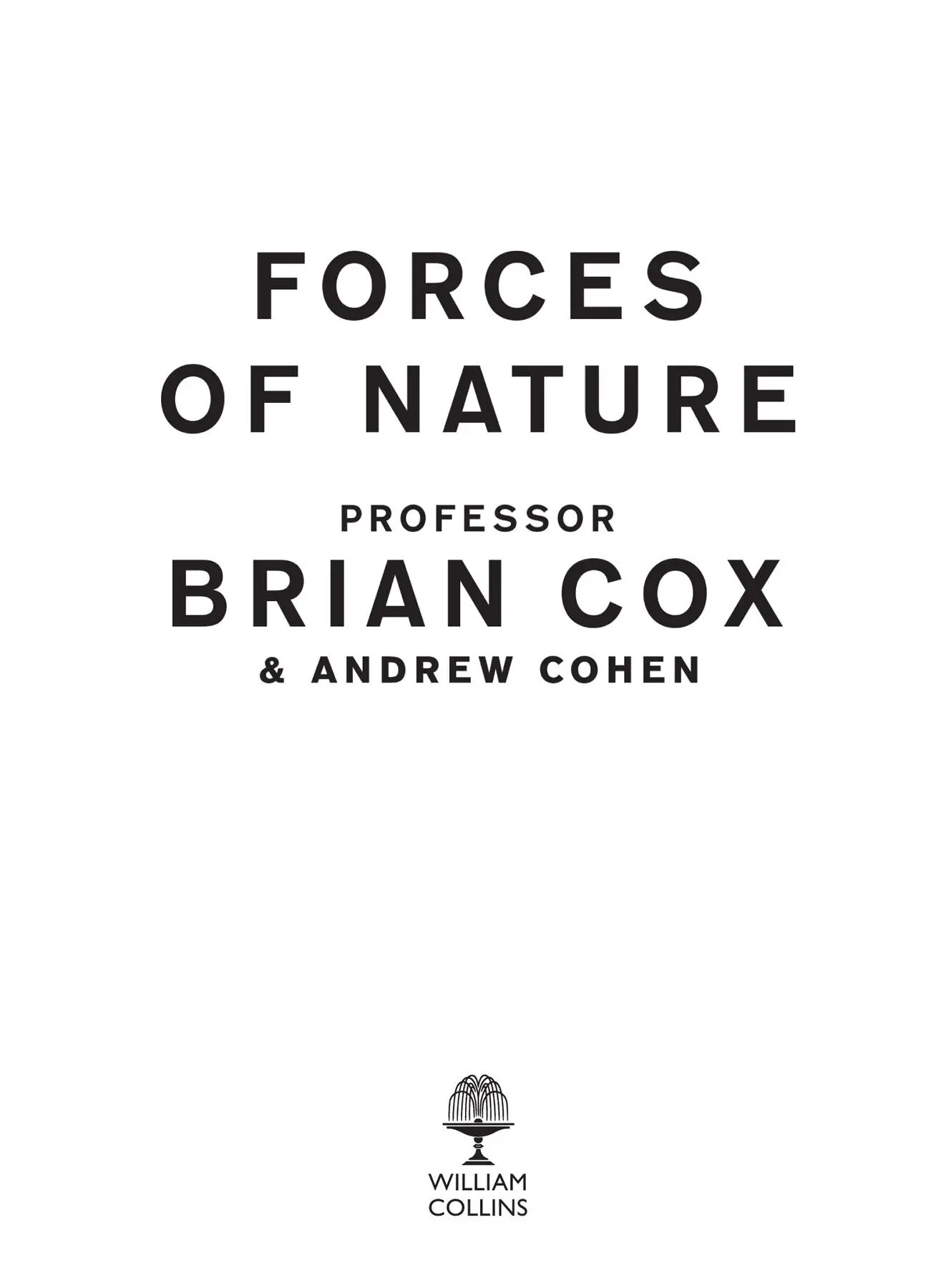
William Collins
An imprint of HarperCollins Publishers 1 London Bridge Street London SE1 9GF
WilliamCollinsBooks.com
This eBook edition published by William Collins in 2017
Text © Brian Cox and Andrew Cohen 2016
Photographs © individual copyright holders
Diagrams, design and layout © HarperCollins Publishers 2017
By arrangement with the BBC.
The BBC logo is a trademark of the British Broadcasting Corporation and is used under licence.
BBC logo © BBC 2014
The authors assert their moral right to be identified as the authors of this work.
Cover image © Shutterstock
A catalogue record for this book is available from the British Library.
All rights reserved under International and Pan-American Copyright Conventions. By payment of the required fees, you have been granted the non-exclusive, non-transferable right to access and read the text of this eBook on-screen. No part of this text may be reproduced, transmitted, downloaded, decompiled, reverse engineered, or stored in or introduced into any information storage and retrieval system, in any form or by any means, whether electronic or mechanical, now known or hereinafter invented, without the express written permission of HarperCollins Publishers.
Source ISBN: 9780008210038
Ebook Edition © March 2017 ISBN: 9780008249335
Version: 2017-07-17
Praise for Professor Brian Cox:
‘Engaging, ambitious and creative.’
– Guardian
‘He bridges the gap between our childish sense of wonder and a rather more professional grasp of the scale of things.’
– Independent
‘If you didn’t utter a wow watching the TV, you will while reading the book.’
– The Times
‘In this book of the acclaimed BBC2 TV series, Professor Cox shows us the cosmos as we have never seen it before – a place full of the most bizarre and powerful natural phenomena.’
– Sunday Express
‘Cox’s romantic, lyrical approach to astrophysics all adds up to an experience that feels less like homework and more like having a story told to you. A really good story, too.’
– Guardian
‘Will entertain and delight … what a priceless gift that would be.’
– Independent on Sunday
For my dad, David.
– Brian Cox
For Benjamin, Martha, Theo, Dan, Jake, Lyla, Ellie, Toby, Phoebe, Max, Zak, Josh, Isaac and Tabitha because curious young minds always ask the smartest of questions.
– Andrew Cohen
Cover
Title Page
Copyright
Praise for Professor Brian Cox
Dedication
Chapter 1
SYMMETRY
The Universe in a Snowflake
Why do Bees Build Hexagons?
Knocking on the Doors of Chemistry
The Fundamental Building Blocks and the Forces of Nature
Why is the Earth a Sphere?
Why does Life Come in So Many Shapes and Sizes?
Symmetry and Symmetry Breaking in Biology
The Universe in a Snowflake
Chapter 2
MOTION
Somewhere in Spacetime
Life on an Orbiting Planet: The Seasons
The Formation of the Earth and Moon
Life on an Orbiting Planet: Storms
Life on an Orbiting, Spinning Planet: The Tides
Einstein’s Theory of Special Relativity
Somewhere in Spacetime
Spacetime Calculations
Chapter 3
ELEMENTS
The Moth and the Flame
Chemistry is all About the Movement of Electrons
Frankenstein’s Monsters
On the Origin of Species: A Framework to Make Sense of Life on Earth
The Oldest Life on Earth
A Warm Little Pond?
Life, Thermodynamics and Entropy
The Moth and the Flame
A Very Different Eden
Life Beyond Earth
Chapter 4
COLOUR
Pale Blue Dot
The Rainbow Connection
Why does the Sun Shine?
The Nuclear Physics of the Sun
Why do Hot Things Shine?: Part 1: James Clerk Maxwell and the Golden Age of Wireless
Why do Hot Things Shine?: Part 2: Max Planck and the Quantum Revolution
A Serendipitous Aside; The Solar Neutrino Problem
Pale Blue Green Planet: Part 1: The Oceans
Pale Blue Green Planet: Part 2: The Sky
Pale Blue Green Planet: Part 3: The Land
Pale Coloured Dots
Plate Section
Picture Credits
Index
By the Same Author
Acknowledgements
About the Authors
About the Publisher
SEARCHING FOR THE DEEPEST ANSWERS TO THE SIMPLEST QUESTIONS
‘What beauty. I saw clouds and their light shadows on the distant dear Earth... The water looked like darkish, slightly gleaming spots... When I watched the horizon, I saw the abrupt, contrasting transition from the Earth’s light-coloured surface to the absolutely black sky. I enjoyed the rich colour spectrum of the Earth. It is surrounded by a light blue aureole that gradually darkens, becoming turquoise, dark blue, violet, and finally coal black.’ – Yuri Gagarin
Taking a different perspective
This is a book about science. What is science? That’s a good question, and there may be as many answers as there are scientists. I would say that science is an attempt to understand the natural world. The explanations we discover can often seem abstract and separate from the familiar, but this is a false impression. Science is about explaining the everyday minutiae of human experience. Why is the sky blue? Why are stars and planets round? Why does the world keep on turning? Why are plants green? These are questions a child might ask, but they are certainly not childish; they generate a chain of answers that ultimately lead to the edge of our understanding.
If you dig deep enough, most questions end with uncertainty. The sky is blue because of the way light interacts with matter, and the way light interacts with matter is determined by symmetries that constrain the laws of Nature. We’ll encounter these concepts later in the book. But if one keeps on digging, and asks why those particular symmetries, or why there are laws of Nature at all, then we are into the glorious hazy place in which scientists live and work; the space between the known and the unknown. This is the domain of the research scientist, and it is a place of curiosity and wonder.
Grander questions lurk in the half-light. How did life on Earth begin? Is there life on other worlds? What happened in the first few moments after the Big Bang? These are questions that have a sense of depth and a feeling of complexity and intractability, but the techniques and processes by which we look for answers are no different to those deployed in discovering why the sky is blue. This is an important point. If a question sounds deep, it doesn’t mean that the way to answer it is to retire to the wilderness for a year, sit cross-legged and hope for something to occur to you. Rather, the answers are often constructed on foundations generated by the systematic and careful exploration of simpler questions. This idea is central to our book. In seeking to understand the everyday world – the colours, structure, behaviour and history of our home – we develop the knowledge and techniques necessary to step beyond the everyday and approach the Universe beyond.
‘THE FIRST DAY OR SO WE ALL POINTED TO OUR COUNTRIES. THE THIRD OR FOURTH DAY WE WERE POINTING TO OUR CONTINENTS. BY THE FIFTH DAY WE WERE AWARE OF ONLY ONE EARTH.’
Читать дальше
